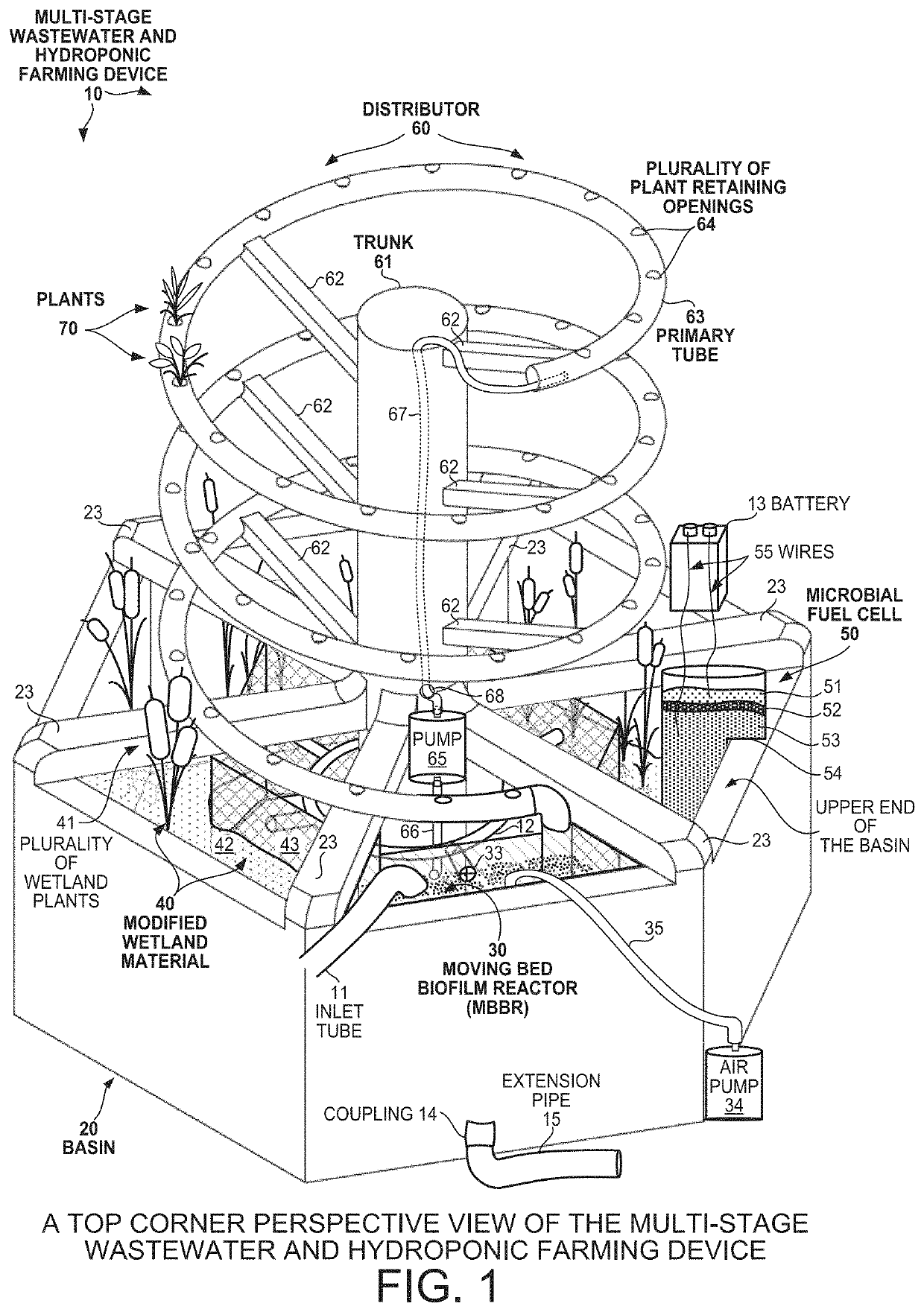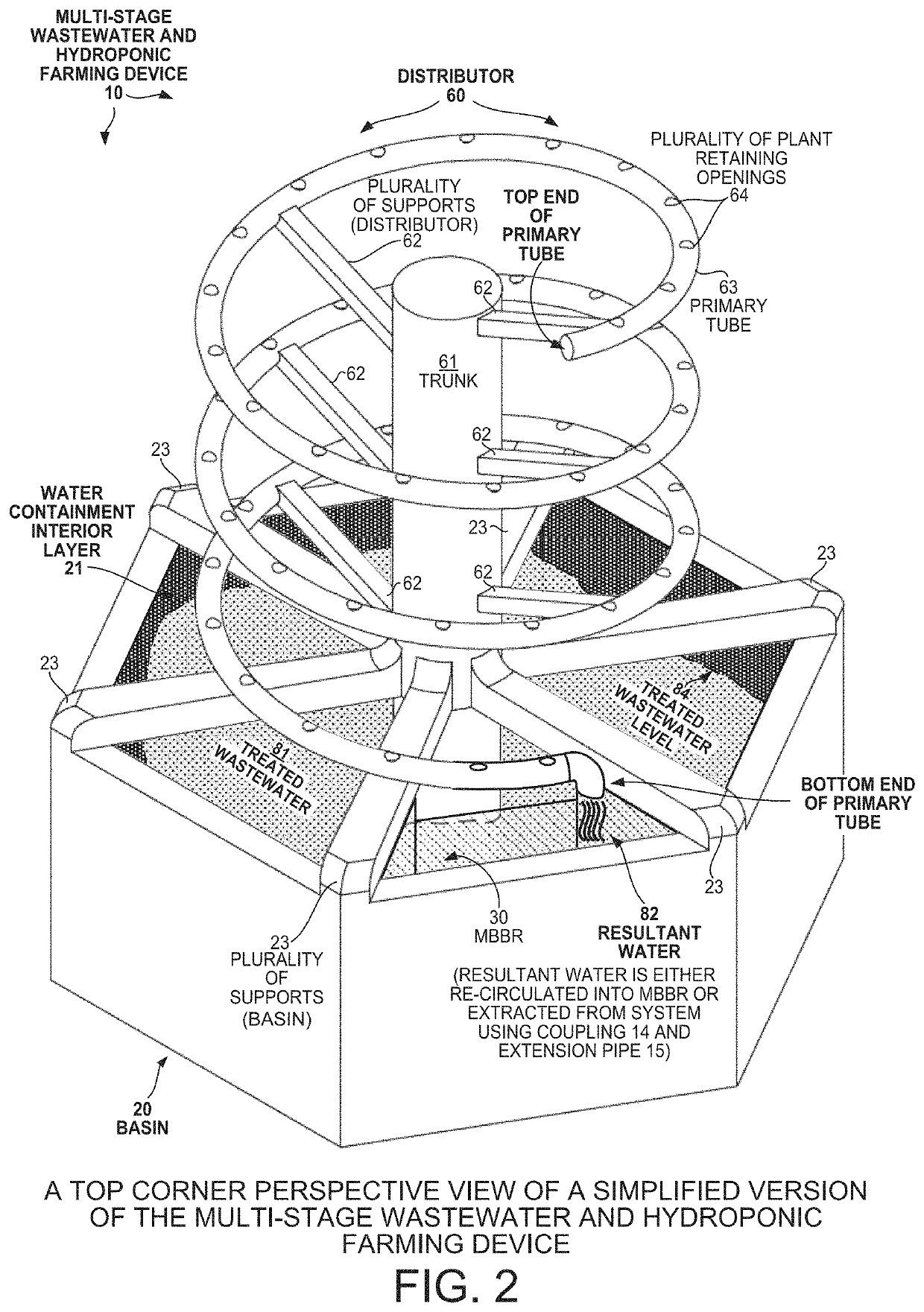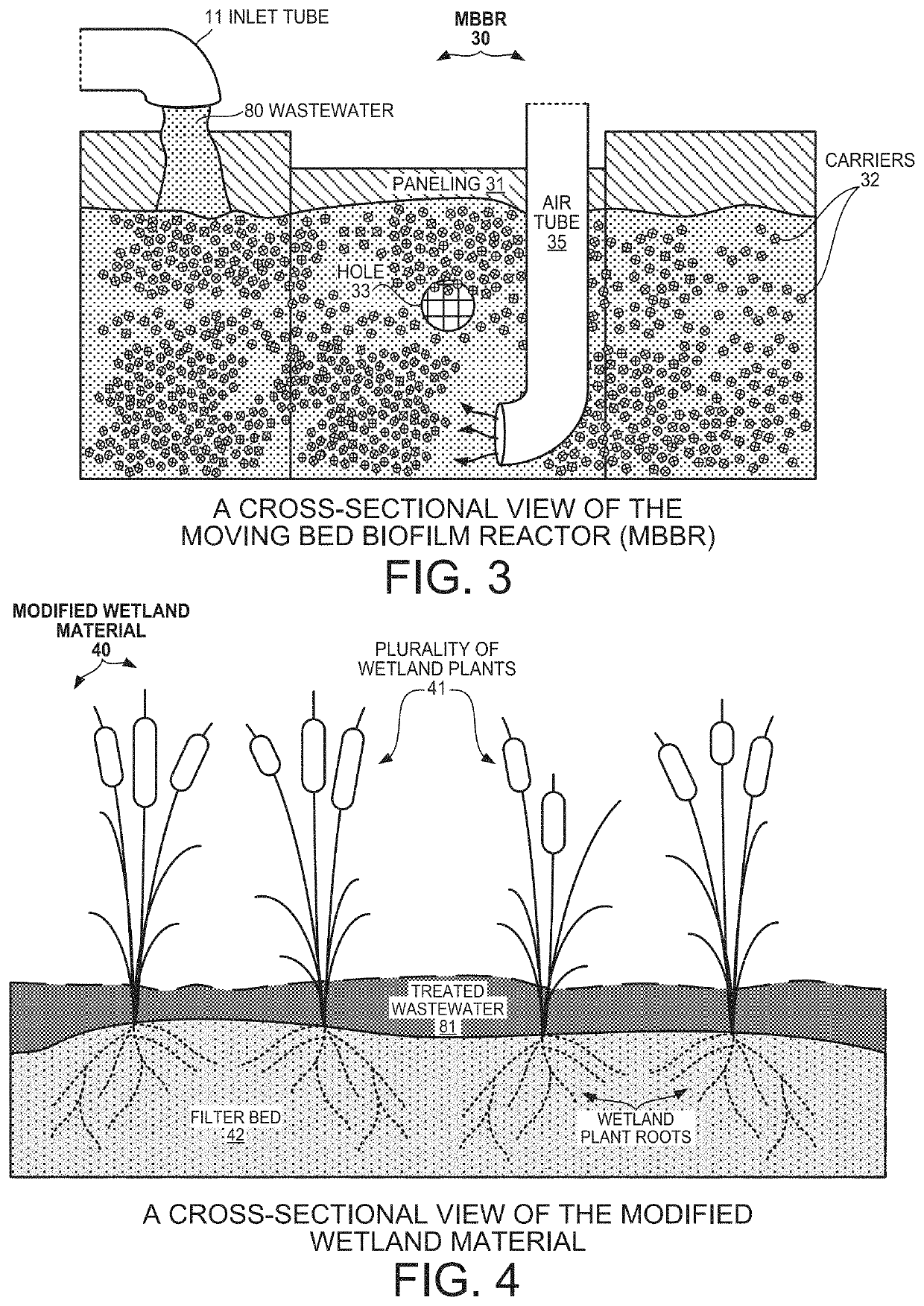Multi-stage wastewater treatment and hydroponic farming device
a technology of wastewater treatment and hydroponic farming, which is applied in the direction of biological water/sewage treatment, multi-stage water/sewage treatment, sustainable biological treatment, etc., can solve the problems of increasing environmental pollution, reducing the economic benefits of reducing waste etc., to achieve the effect of reducing waste, compact structure, and reducing environmental pollution
- Summary
- Abstract
- Description
- Claims
- Application Information
AI Technical Summary
Benefits of technology
Problems solved by technology
Method used
Image
Examples
Embodiment Construction
[0030]Reference will now be made in detail to some embodiments of the invention, examples of which are illustrated in the accompanying drawings. All illustrations of the drawings are for the purpose of describing selected versions of the present invention and are not intended to limit the scope of the present invention.
[0031]FIG. 1 is a diagram showing a top corner perspective view of the Multi-Stage Wastewater Treatment and Hydroponic Farming Device 10 in accordance with one embodiment. The Multi-Stage Wastewater Treatment and Hydroponic Farming Device 10 comprises a basin 20 and a distributor 60. In one example, water is supplied to and extracted from the Multi-Stage Wastewater Treatment and Hydroponic Farming Device 10 using an inlet tube 11, a coupling 14 and extension pipe 15. The inlet tube 11 is a hollow, preferably PVC or another plastic connector that enables a user to continuously add wastewater 80 to the basin 20. The inlet tube 11 can vary in length based on the user's n...
PUM
| Property | Measurement | Unit |
|---|---|---|
| energy | aaaaa | aaaaa |
| mechanical | aaaaa | aaaaa |
| thermal energy | aaaaa | aaaaa |
Abstract
Description
Claims
Application Information
 Login to View More
Login to View More - R&D
- Intellectual Property
- Life Sciences
- Materials
- Tech Scout
- Unparalleled Data Quality
- Higher Quality Content
- 60% Fewer Hallucinations
Browse by: Latest US Patents, China's latest patents, Technical Efficacy Thesaurus, Application Domain, Technology Topic, Popular Technical Reports.
© 2025 PatSnap. All rights reserved.Legal|Privacy policy|Modern Slavery Act Transparency Statement|Sitemap|About US| Contact US: help@patsnap.com



